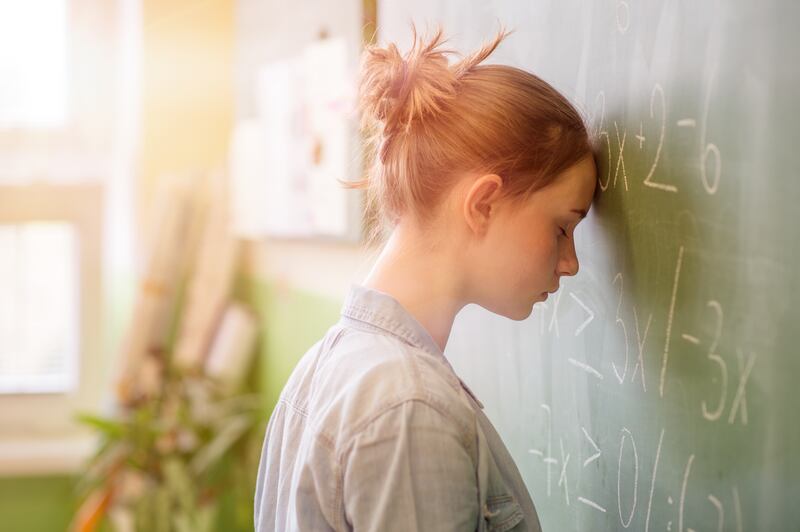As a kid in Los Gatos, California, I’d jump on my bike after school or during summer and head off with my friends to each other’s swimming pools. Or we’d go to the creek or into the hills and play all day. We’d wander home exhausted in time for (maybe) lunch, definitely dinner.
As teenagers, we added going to Santa Cruz: skimboarding, body surfing, surfing, riding rides at the Beach Boardwalk, and junk food galore. After high school football or basketball games, we went to the pizza parlor. No computers, cellphones or devices, but we had a real phone on a long cord set into the wall in the hallway — no email, texting, Siri, etc. — and when it rang busy you couldn’t leave a message. We listened to transistor radios with one ear bud, a few AM channels and horrible reception. At night we watched TV or read books, and during the school year did some homework. Weekends and summer nights, we hung out with friends, went to the beach, Lexington Reservoir, friends’ houses or drove to San Francisco and wandered. I didn’t get my first job until after I graduated high school.
In school, I was obsessed with sports and there were three sports during each high school year. Depending on my fancy, I played on various sports teams — basketball, softball, tennis, swimming, track and field and volleyball. I got good grades, loved English and history, and hated math — not the teacher Mr. Kohs as much as homework every night, and a “D” was fine with me. After that I quit math, never even took math classes at university.
In Arizona recently, I had a chat with a delightful high school junior, Livy. Knowing she’s been a longtime softball player, I asked her how softball was going because these days any extracurricular activity goes year-round.
“Oh, I’m taking a break right now.”
“Why?”
“A bit burned out.”
And why not?
Recalling my growing-up years, I responded, “I don’t know how you do it. I loved starting a new sport and playing for 2-2½ months, but I also couldn’t wait for the season to end, have a break, and try something new.”
No year-round, hideous pressure, because scholarships for girls were nonexistent. Sports were competitive but delightful and school was relatively fun and safe. Those who went to college often just picked a school and got in. Lacking today’s technology, university was less demanding, but we came out educated, capable and far less indoctrinated.
Today, the pressure on children and young people is extraordinary and unrelenting. Pardon my hyperbole, but today youths seem to have to pick one sport by age 5, play on traveling teams and train year-round if they are hoping to get an athletic scholarship (see “Are American youth sports in crisis? Inside the competitive youth world many say needs to change” by Ethan Bauer, published on Deseret.com on Sept. 3). They start a musical instrument, dance classes or voice lessons by age 3. They learn to read in preschool. (In kindergarten, I played on the playground, in the classroom, ate graham crackers and drank milk, built blocks, took a nap on a mat and went home happy.)
For some youths today, life is still enjoyable and they participate in lots of fun and rewarding experiences. Yet more and more describe high school with meanness, bullying, cliques and foul language — it seems like a war zone. They hate it. Those who want to get into certain schools take advanced placement and honors classes, do enormous amounts of homework, tons of extracurricular activities and prep to up their ACT or SAT score. (See “Back to school: How to make sure your child is ready to launch a successful school year” by Lois Collins, published on deseret.com on Aug. 21.)
Wanting to be connected, they sit alone in a room on a device guaranteed to increase loneliness and decrease human connectedness. Online they face bullying, or they bully, read fake posts and take down their posts when it doesn’t get enough likes. They are socialized and pressured to dangerous practices — drugs, drinking, pornography, eating disorders, sexual activity — which lowers self-esteem and which can create addictions. (See “Social Networking and Children,” by the American Academy of Child and Adolescent Psychiatry, updated 2017 on www.aacap.org, and “The Impact of Social Media on Children, Adolescents and Families” by the American Academy of Pediatrics, April 2011, online at pediatrics.aappublications.org.)
The gap between my young life and their lives is enormous, mine being relatively relaxed compared to today’s often crushing stresses. Should we be surprised when some children and teens today are depressed, have severe anxiety, are suicidal, etc.?
I don’t have answers to these problems, but they are real. I write to help this generation of parents, caregivers and grandparents, to make them aware and more attuned to the stresses youths face today — to suggest we take youths seriously when they struggle and get them help when help is needed.
I hope we will be better listeners, more understanding, more compassionate, more loving and less demanding of perfection. I hope we will love our children for who they are, embrace them, laugh and play with them and teach them to work and sacrifice. I hope we will introduce them to eternal principles of right and wrong, help them understand their divine destinies and potential, and arm them against the adversary. I hope we will be the helping hand when they struggle or fall — and they will — and we will. I hope we will see them as the Savior sees them and love them as the Savior loves them.
Kristine Frederickson writes on topics that affect members of The Church of Jesus Christ of Latter-day Saints worldwide. She teaches part time at BYU. Her views are her own.
Email: kfrederickson.desnews@gmail.com


